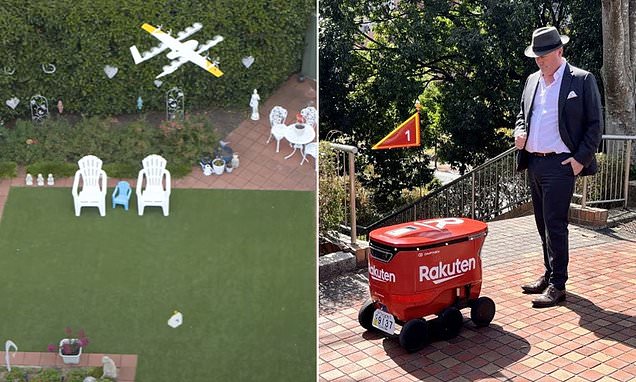Dr. Andrew Miller, a visiting expert, believes that automated cars are coming to Australia and will have profound effects on how work is done. According to him, while blue collar jobs may not be significantly affected, white collar workers have a lot to fear as artificial intelligence is more dangerous to them. Miller believes that the lack of space for cars could create an opportunity for robo-taxis. Proper regulation is vital for robo-taxis, and the Uber model of setting up and asking for permission later is not the right way to do things. Dr. Miller suggests making cities less hospitable to private cars and more hospitable to everything else, including drones and e-scooter riders. Big changes have to be made to Australian cities to accommodate the technology. Finally, Dr. Miller compared the rise of automated cars to the job of elevator operators, which existed until about 30 years ago, and believes that change is inevitable and the workforce needs to adapt to the changes that are coming.
The rise of technology, robots, and automated cars could mean job losses for Australians, with white collar workers likely to be the hardest hit. According to Dr. Andrew Miller, a visiting expert in the area, artificial intelligence (AI) is more dangerous to white collar workers than blue collar workers. While AI may not replace most physical jobs, it is expected to have profound effects on how work is done, particularly for people who spend a lot of time typing or using computers. Dr. Miller believes that robot deliveries could soon become commonplace in Australia.
However, he also noted that technology like driverless trucks will not necessarily lead to an overall loss of jobs, as there will still be work to be done in logistics and shipping. While the truck will no longer need to be operated by a driver, it will still require loading, securing, and weighing, among other things, which can only be done by humans.
Dr. Miller, who works as a senior leader in urban solutions for the multinational group Hatch, does not like the use of the term “autonomous vehicle” for driverless cars. He believes that the term is misleading, as it implies that the vehicle is completely self-sufficient, when in reality, there are still many tasks that need to be performed by humans.
In recent news, a trial run of driverless trucks took place in Melbourne last November, which was criticized by some as being “job-killing”. Despite this, Dr. Miller is optimistic about the future of technology and the workforce, stating that people will be doing less of the work that machines can do and more of the work that only humans can do.
Companies like Wing are already utilizing robots for deliveries in Canberra, with the ability to deliver up to 250 items from Coles to various addresses. With the rise of technology and automation, it’s clear that Australians need to prepare for the changes that are coming to the workforce.
Dr. Andrew Miller, a visiting expert, believes that the term ‘autonomous vehicle’ is misleading because it implies that the vehicle can make all the decisions. According to him, an automated car does the driving task, but it is not autonomous, as it does not make choices for the driver. Regardless of what people call the technology, it is coming, though some people fear and resist it.
Dr. Miller compared the rise of automated cars to the job of elevator operators, which existed until about 30 years ago. At one time, the idea of going into an elevator without a professional operator was ridiculous. Similarly, people will one day find it hard to believe that they didn’t have cars that could drive themselves.
Having goods delivered by drones might seem like something from science fiction, but it already exists in Canberra, where a company called Wing can deliver up to 250 items from Coles. Dr. Miller believes that robot deliveries could soon become commonplace in Australia. While drones are suitable for less dense cities, on the ground robot delivery would make more sense in more populated cities such as Sydney or Melbourne. However, big changes have to be made to Australian cities to accommodate the technology.
Dr. Miller suggested making footpaths and bike lanes bigger to accommodate pedestrians, cyclists, e-scooter riders, and robots. Private cars will have to make way for the extra space. He believes that the future of great global cities is one where more space is given to people and robots and less to private cars.
Robo-taxis, such as those already being used in San Francisco, Los Angeles, Las Vegas, and in Beijing, Shanghai, and Shenzhen, are another example of how the transportation industry is evolving. As with any new technology, some people fear and resist it, but Dr. Miller believes that change is inevitable, and the workforce needs to adapt to the changes that are coming.
Dr. Andrew Miller, a visiting expert, believes that the lack of space for cars could create an opportunity for robo-taxis. Robo-taxis are already being used in San Francisco, Los Angeles, Las Vegas, Beijing, Shanghai, and Shenzhen. According to Dr. Miller, Australia could have robo-taxis in short order if this is something Australians want. However, proper regulation is vital, and the Uber model of setting up and asking for permission later is not the right way to do things. Dr. Miller believes that Silicon Valley’s motto of “move fast and break things” is not suitable when it comes to moving physical objects at high speeds through crowded spaces. Breaking things when moving in crowded spaces is not acceptable.
Don’t miss interesting posts on Famousbio










